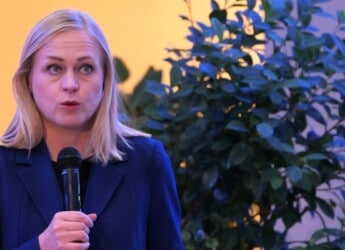Editor’s Note: The latest assessment from the Institute for the Study of War (ISW), dated April 4, 2025, unveils a deepening schism between diplomatic overtures and battlefield realities in the protracted Russo-Ukrainian conflict. This narrative dissects the juxtaposition of economic appeasement strategies articulated by Russian financial elites with the continued belligerence of Moscow’s military apparatus. From the lethal missile strike in Kryvyi Rih to new infrastructural partnerships and global alliances, the situation illustrates how the Kremlin pursues geopolitical influence through duplicity and force. This report enriches strategic understanding by contextualizing the complexities of diplomacy, warfare, and shifting alliances that define the evolving theater of operations.
For those seeking to grasp the full scope of this evolving landscape, the complete updates from the Institute for the Study of War serve as an invaluable resource.
Content Assessment: Between Peace Talks and Ballistic Missiles: The Kremlin’s Double Game in Ukraine
Information - 92%
Insight - 93%
Relevance - 90%
Objectivity - 92%
Authority - 94%
92%
Excellent
A short percentage-based assessment of the qualitative benefit expressed as a percentage of positive reception of the recent article from ComplexDiscovery OÜ titled, "Between Peace Talks and Ballistic Missiles: The Kremlin’s Double Game in Ukraine."
Background Note: ComplexDiscovery’s staff offers distinctive perspectives on the Russo-Ukrainian war and Middle Eastern conflicts, informed by military experience on the West German, East German, and Czechoslovakian border during the Cold War and in Sinai as part of Camp David Accord compliance activities. This firsthand regional knowledge has been further enhanced by recent staff travels to Eastern European countries, including Estonia, Finland, Latvia, Lithuania, and Poland. These visits have provided up-to-date, on-the-ground insights into the current geopolitical climate in regions directly impacted by the ongoing conflict.
Combined with cybersecurity, information governance, and eDiscovery proficiency, this multifaceted experience enables comprehensive analysis of these conflicts, including the critical impact of cyber warfare, disinformation, and digital forensics on modern military engagements. This unique background positions ComplexDiscovery to provide valuable insights for conflict-related investigations and litigation, where understanding the interplay of technology, data, and geopolitical factors is crucial.
Russo-Ukrainian Conflict Update*
Between Peace Talks and Ballistic Missiles: The Kremlin’s Double Game in Ukraine
ComplexDiscovery Staff
On April 3, 2025, a revealing contradiction emerged as Kirill Dmitriev, CEO of the Russian Direct Investment Fund (RDIF), conducted interviews with American media to promote a vision of Russia as a cooperative and economically attractive global player. Speaking in Washington, D.C., Dmitriev emphasized resilience in the face of Western sanctions and hinted at future collaboration with the United States on resource extraction and Arctic development.
His comments painted an image of a pragmatic Russia ready for economic partnership and unconcerned with sanctions relief—a direct divergence from the Kremlin’s explicit demand for sanction concessions as a condition for ceasefire agreements. Dmitriev even broached the possibility of security guarantees for Ukraine, a notion consistently dismissed by Russian leadership as incompatible with its territorial and security demands.
These dissonant messages are emblematic of a broader Russian strategy: using economic engagement and diplomatic language to create a façade of flexibility while preserving rigid geopolitical objectives. By highlighting potential financial opportunities, Dmitriev’s public diplomacy appears tailored to distract from Moscow’s intransigence and its continued rejection of ceasefire offers proposed by the United States and Ukraine.
Fire from the Sky: The Reality Behind Ceasefire Rhetoric
Contrasting starkly with the diplomatic narrative, April 4 witnessed a deadly Russian ballistic missile strike in the central Ukrainian city of Kryvyi Rih. Sixteen civilians, including children, were killed when the missile obliterated residential structures and a playground. The local administration confirmed widespread damage to housing and gas infrastructure, intensifying the civilian toll amid discussions of limiting attacks on energy facilities.
The missile assault was accompanied by a significant wave of drone strikes. Russian forces launched 78 Shahed and decoy drones from various border regions. Ukrainian air defenses downed 42 of them, and electronic countermeasures disrupted another 22. Despite these successes, remaining drones inflicted damage in Kharkiv, Dnipropetrovsk, Kyiv, and Zaporizhia oblasts. These strikes coincide with intelligence indicating that Russia is not only rebuilding its missile reserves domestically but also acquiring additional munitions from North Korea, positioning itself for future operations of greater scale.
This tactical evolution—relying increasingly on drones while conserving missiles—suggests a strategy focused on attrition, disruption, and psychological pressure, reinforcing the reality that Russia is not scaling back its war effort but preparing for its continuation.
Strategic Stakes Abroad: New Partnerships and Global Posturing
Even as the war intensifies, Ukraine continues to build economic resilience. On April 4, the state railway operator Ukrzaliznytsia announced two contracts with Chinese manufacturers to supply 32,000 tons of rail, enough to repair or construct 245 kilometers of track. This procurement marks Ukraine’s first open-bid infrastructure deal since 2021 and reflects a subtle shift in China’s wartime posture: maintaining strategic ambiguity while entering economic cooperation with Ukraine.
China’s willingness to support Ukraine’s reconstruction contrasts with its growing, though selectively measured, relationship with Russia. Chinese Foreign Minister Wang Yi recently reiterated Beijing’s intention to contribute to peace efforts. However, this has drawn criticism from Russian voices who express frustration with China’s transactional stance. One Russian commentator lamented that Ukraine is now “flaunting” cooperation with a country presumed to be Russia’s strategic partner, revealing tensions in the so-called “no-limits” partnership.
In parallel, Russia has expanded its influence in Africa by forging a strategic alliance with the Alliance of Sahel States (AES), comprising military juntas in Mali, Niger, and Burkina Faso. At a summit in Moscow, Russia became the first nation to formally recognize the AES joint armed forces and pledged military training, modern weaponry, and logistical support. This initiative, part of a broader geopolitical push, aims not only to assert influence in the Sahel but to access vital mineral resources, further undermining Western footholds in the region.
Escalating Fronts: Battlefield Movements and Mobilization
While diplomats speak, the war grinds on. Ukrainian forces advanced near Chasiv Yar and Pokrovsk, while Russian units secured ground near Kupyansk, Toretsk, and Pokrovsk. These tactical gains, though modest, reveal persistent combat intensity and an unrelenting tempo across the front.
Russia’s manpower continues to grow in preparation for sustained operations. Ukrainian officials estimate that Russia seeks to augment its military by 150,000 troops in 2025, potentially fielding up to 15 new divisions. This force expansion underscores Moscow’s long-term intent to maintain pressure across multiple fronts, regardless of parallel diplomatic engagements.
In Washington, U.S. Secretary of State Marco Rubio directly conveyed American skepticism to Dmitriev, emphasizing that Washington would consider additional sanctions and reassess its role in negotiations if Russia’s approach continues to undermine peace efforts. The underlying message was clear: gestures toward diplomacy must be matched by concrete de-escalation, not masked escalation.
From Washington boardrooms to the bombed streets of Kryvyi Rih, the paradox of Russia’s dual strategy plays out with global implications. As Dmitriev extols economic cooperation, drone squadrons and missiles devastate Ukrainian cities. As China bids to supply rail to Kyiv, Moscow maneuvers for gold in the Sahel. This juxtaposition raises a pivotal question: Can Russia’s narrative of partnership coexist with its strategy of destruction—or is the illusion of diplomacy simply the newest weapon in an ever-expanding arsenal of war?
As a leading source for cybersecurity, information governance, and legal discovery insights, including international investigations and litigation, ComplexDiscovery OÜ recognizes the importance of awareness regarding alleged and documented criminal acts, particularly in the context of the Russia-Ukraine conflict. While we, following the lead of the Institute for the Study of War (ISW), do not provide detailed coverage of war crimes in our primary reports, we encourage professionals within the eDiscovery ecosystem to stay informed about these activities. This awareness is crucial for understanding potential future legal actions and responsibilities.
Detailed Reporting with Maps for April 4, 2025, from the ISW – Mouseover to Scroll
Russo-Ukrainian War April 4 2025Review the Detailed Reporting and Maps PDF
About the Institute for the Study of War Research Methodology
ISW’s research methodology relies on both primary and secondary sources, enabling researchers to develop a comprehensive understanding of the situation on the ground. In order to analyze military and political developments in any given area, ISW’s research analysts must wholly understand the systems of enemy and friendly forces. They must also understand the population demographics, physical terrain, politics, and history of that area. This lays the analytical foundation for understanding the reasons for particular developments and fulfilling their assigned research objectives. ISW analysts also spend time in places like Iraq, Afghanistan, and elsewhere in order to gain a better understanding of the security and political situation and to evaluate the implementation of current strategies and policies. Their researchers compile data and analyze trends, producing a granular analysis of developments in areas of research, producing an accurate, high-resolution, timely, and thorough picture of the situation. ISW’s research methodology guarantees its success and commitment to improving the nation’s ability to execute military operations, achieve strategic objectives, and respond to emerging problems that may require the use of American military power.
About the Institute for the Study of War
The Institute for the Study of War advances an informed understanding of military affairs through reliable research, trusted analysis, and innovative education. They are committed to improving the nation’s ability to execute military operations and respond to emerging threats in order to achieve U.S. strategic objectives. ISW is a non-partisan, non-profit, public policy research organization.
Learn more, get involved, and contribute today.
Additional Reading
- From Dissent to OSINT? Understanding, Influencing, and Protecting Roles, Reputation, and Revenue
- [Annual Update] International Cyber Law in Practice: Interactive Toolkit
- Data Embassies: Sovereignty, Security, and Continuity for Nation-States
Assisted by GAI and LLM Technologies
* Sourced and shared with direct expressed permission from the Institute for the Study of War (ISW).
Source: ComplexDiscovery OÜ



























